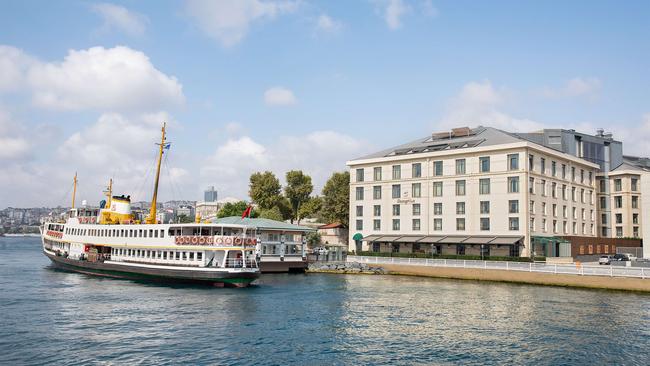Situated on the scenic Bosphorus Strait in Istanbul, Turkey, the Dolmabahce Palace stands as a magnificent testament to the city’s rich history and architectural grandeur. This opulent palace, once the residence of Ottoman sultans and later utilized as the administrative center of the Turkish Republic, continues to captivate visitors with its awe-inspiring beauty, lavish interiors, and historical significance. A fusion of various architectural styles and adorned with intricate details, the Dolmabahçe Palace is a true masterpiece that transports visitors to a bygone era.
Historical Background:
The Dolmabahçe Palace was commissioned by Sultan Abdülmecid I in the mid-19th century as a replacement for the Topkapı Palace, the previous royal residence. Construction began in 1843 and took thirteen years to complete, employing the finest architects, decorators, and craftsmen of the time. The palace was designed to showcase the grandeur and opulence of the Ottoman Empire while incorporating European architectural influences.
Architectural Splendor:
Spanning an impressive 45,000 square meters, the Dolmabahçe Palace features a harmonious blend of architectural styles, primarily incorporating neoclassical and baroque influences. Its façade is a captivating sight, characterized by a symmetrical design, imposing columns, and large windows that allow an abundance of natural light to grace the interior. The palace’s central dome and elegant clock tower stand tall, commanding attention from both land and sea.
Interior Grandeur:
As visitors step inside the Dolmabahçe Palace, they are greeted by a series of lavishly decorated rooms that exude opulence and refinement. The ceremonial hall, known as the Ceremonial Hall of the Valide Sultan, is the palace’s centerpiece, featuring a stunning crystal chandelier gifted by Queen Victoria of England. The crystal chandelier, one of the largest in the world, weighs an astounding 4.5 tons and is a sight to behold. The palace also houses an impressive collection of European furniture, exquisite chandeliers, intricate carpets, and priceless artwork, including paintings by renowned artists such as Ayvazovsky and Ziem.
Gardens and Surroundings:
Beyond its magnificent interiors, the Dolmabahçe Palace boasts beautifully landscaped gardens that complement its architectural splendor. The palace grounds feature vibrant flowerbeds, meticulously trimmed hedges, and serene fountains that add to the overall charm of the complex. Visitors can stroll along the pathways, enjoying panoramic views of the Bosphorus and the Asian side of Istanbul.
Presidential Legacy:
In addition to its association with the Ottoman Empire, the Dolmabahçe Palace holds great significance in modern Turkish history. It served as the administrative center for the Turkish Republic from 1927 until 1949 and witnessed the political transformations that shaped the nation. Visitors can explore the offices and chambers used by Atatürk, the founder of modern Turkey, which have been preserved to offer insights into his visionary leadership and the historical events that unfolded within the palace walls.
Preservation and Tourism:
Today, the Dolmabahçe Palace stands as a living testament to the rich cultural heritage of Istanbul. Carefully preserved and restored, it welcomes visitors from around the world, offering guided tours that provide a glimpse into the luxurious lifestyle of Ottoman sultans and the transformative years of the Turkish Republic. The palace’s architectural beauty, coupled with its historical significance, makes it a must-visit destination for history enthusiasts, architecture aficionados, and anyone seeking to be enchanted by Istanbul’s captivating past.













